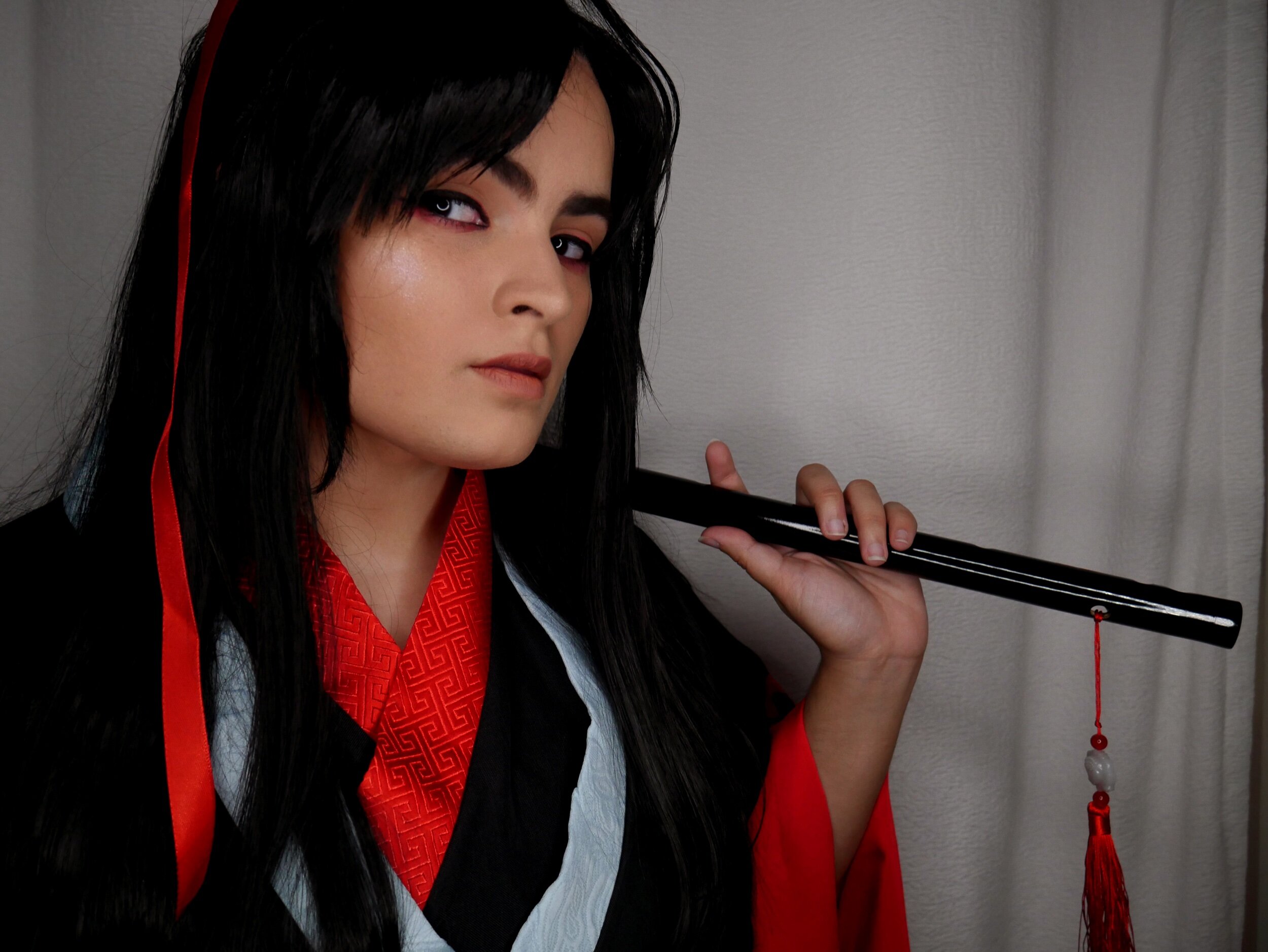Genderbending & Crossplay
Crossplay, as previously mentioned, is a portmanteau of the words “cosplay” and “crossdresser”. There are negative connotations to the latter term due to harmful stereotypes that pervade mainstream as well as niche media.
Genderbending a cosplay is when the character’s portrayed gender doesn’t match up with the cosplayer’s gender. The solution for cosplayers who either don't or can’t crossplay is to genderbend the character to match their own gender. An example would be taking a male character such as Wei Wuxian and genderbending him to cosplay a female version of him. This type of portrayal, depending on the character’s original outfit and the cosplayer’s preferred style, includes altering the character’s outfit design in order to create a cosplay that is still identifiable as Wei Wuxian.
Canon Wei Wuxian versus a genderbent Wei Wuxian.
Wei Wuxian cosplay. Frankie Negron, 2021.
@honeysweetmadness Moral of the story? Don’t annoy a fox //##foxxian ##modaozushi魔道祖师 ##weiwuxian ##mdzs ##modaozushicosplay
♬ fell in love with me - officialsupremeaudioz
Genderbending is considered to be one of the rules of the internet, known colloquially as Rule 63. The basis of the “rule” is that there is female/male version of any character in existence, be they the work of fans or official gender-swaps. An example of an official gender-swap can be found within the Marvel Multiverse in Earth-3490. While Tony Stark is Iron Man through most of the universes in the Marvel Multiverse, there’s a universe where he was born a woman. In that iteration, Iron Man is Iron Woman (given name is Natasha Stark) and she eventually marries Steve Rogers.
Crossplay, on the other hand, is when the cosplayer presents as a gender different from their own for any number of reasons. It could be because the character is either androgynous or a shapeshifting character (another option for gender-bending a character).
As cosplay itself is a liminal space, this allows for cosplayers to take liberties with the way they present a character as well as themselves.
